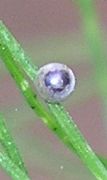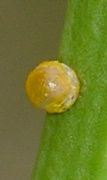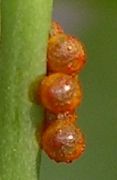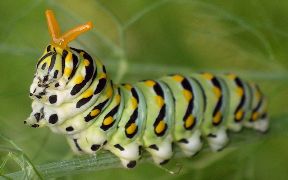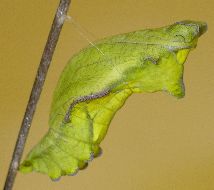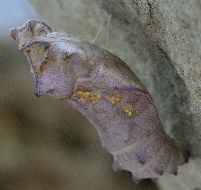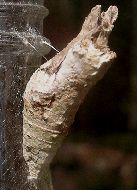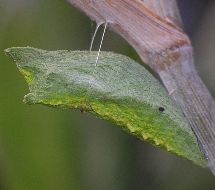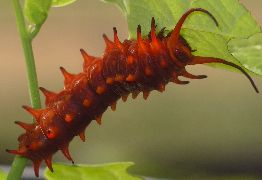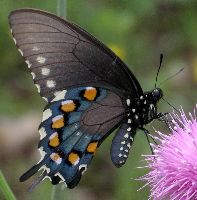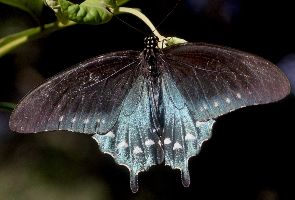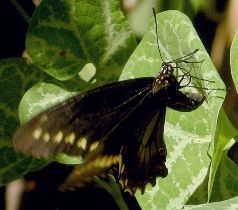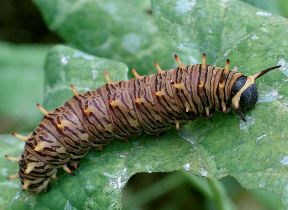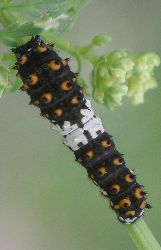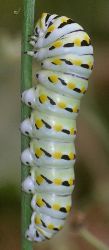
| Papilionidae ~ Swallowtails |
page 1 ![]() page 2
page 2
|
This family contains our largest butterflies. Both the Giant and Tiger Swallowtails are huge compared to other species, and they are hard to miss. Host plants are specific enough that it is possible to locate larvae if you know what to look for. Even the eggs are big enough to find with only a bit of searching. They are round and usually laid on the stems of the plants.
Swallowtail caterpillars all have a strange organ called an osmeterium that is located just behind their head. When extended, it looks like an orange forked prong sticking out like a weird horn. It smells sort of sickly sweet and contains chemicals that are thought to repulse predators. When the osmeterium retracts, it does so by turning inside-out. Most of the time, the caterpillars do not extend it fully, and the tips are not pointed because they are still not fully pushed out.
The pupae of swallowtails are also distinctive. They are positioned so that the head is held upwards by using a strand of silk for support. The tail end is connected to a stem or other structure. The pupae are camouflaged to match foliage or stems and are difficult to find, even though they are often right out in the open.
A relatively common papilionid species here is the Pipevine Swallowtail (Battus philenor). The caterpillars, which come in two color forms: orange and black, feed on pipevine plants in the genus Aristolochia. One of our native pipevines, Swan Flower (Aristolochia erecta), is found in grassy areas, where its leaves look exactly like grass. However, the caterpillars can certainly find it and are more likely to be seen than the plant itself. Aristolochia fimbriata, a common imported garden plant, is also a popular host. Both the caterpillars and the adults are very conspicuous, advertising their protection of noxious chemicals that they obtain from the poisonous pipevines on which they feed.
Pipevine Swallowtail adults are black and the males have a pronounced blue metallic sheen to their hind wings. Females sometimes have a hint of the blue but are mostly black. The undersides of the hind wings are decorated with white and orange spots. When they feed, Pipevine Swallowtails rarely stop fluttering, making it hard to get a good look at them. The iridescent blue, though, is usually obvious.
A closely related species sometimes found in Austin is the Polydamas or Gold Rim (Battus polydamas). This swallowtail lacks the tails on its wings. It also used pipvines as a host plant and the caterpillars have fleshy projections similar to those on Pipevine Swallowtail larvae. However, they have well marked stripes on their bodies distinguishing them from that species.
The Black Swallowtail (Papilio polyxenes) is probably our most commonly seen species. Their host plants include members of the parsley family, Apiaceae, especially fennel, carrots, dill, and several native wildflowers. The caterpillars are quite variable in color, from almost white with small spots to almost all black, but they are always a combination of green, yellow, black and white. Early instar Papilio caterpillars resemble bird droppings and the Black Swallowtail is no exception. The very small larvae are mostly black with a white band in the middle. They also have spiny projections, which they eventually lose as they become larger.
|
page 1 ![]() page 2
page 2
![]()
